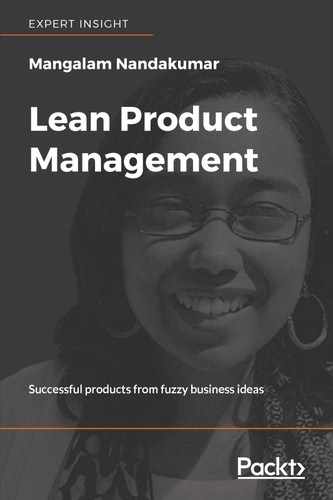In the previous chapter, we saw how to create a cost-impact matrix and determine the smartest way to deliver an Impact Driven Product. Now, these were a prioritized list of feature ideas, but when we have more feature ideas than we can possibly deliver within given business constraints, also accounting for external pressures, how do we decide which feature to launch? Also, within each feature, how do we determine the level of product completeness?
Business and market maturity determine the extent of product completeness we aim for. Unexplored markets, fuzzy business ideas, and untested technology need one approach to product building. Known business models and processes in established markets may require another approach. Exploring product/market fit with viable technology and untested business goals requires a different approach again.
In this regard, this chapter looks at the following topics:
- The need to understand the maturity of the business and the market landscape in order to determine the first version of the product to launch
- The inputs to consider for every subsequent release of the product
- Defining the scope for the product release
"Done is better than perfect."
Anonymous
I have been painting, sketching, and teaching art for many years now. As an artist, I find many similarities in excitement and challenges between planning a painting and managing a product. When an inspiration for a new painting descends, it is so energizing. I want to jump right in, splash paint on a canvas, and let the brush strokes take over. Sometimes, it feels almost like desperation. It's almost like this: if I don't capture the inspiration in my head and put it on a canvas swiftly, the inspiration will fizzle out.
Of course, making good art requires planning. There is a method to it. Paints don't dry at the pace you want them to. Proportions and perspectives don't fix themselves. Brushes and palettes don't take care of themselves. I have to slow down and plan the details. I need to work on the painting layer by layer, but this slowing down and deeply connecting with each layer of a painting has its downside. It creates a sort of obsession with details. There is a drive to stop at nothing but perfection. I have a tendency to keep improving on the painting, and never really feel satisfied. This dissatisfaction can be so blinding that sometimes I want to tear it all apart and start afresh.
Over time, I have come to learn the trick to avoiding this trap. The trick is to step back and evaluate. Sometimes, this evaluation requires feedback from others. I must throw away the brush when I find myself coming back and fixing a little speck of paint here and there. Forcing myself to stop prevents me from getting sucked into the abyss of seeking perfection. It helps me to look at the big picture (literally) and value it for what it is.
At the end of my painting process, I still put out something that I'm reasonably satisfied with. I can still identify a thousand mistakes in my painting: patched up corrections, less-than-perfect work, poor choice of colors, and all the other shortcomings. For someone looking at a completed artwork, the nuances of how it was made and the perfection of the painting techniques may be hidden. Also, art is very personal. So, the emotional appeal may matter more than the technique. Sometimes I might be very happy with how my painting turned out, but the people who I show it to may be unimpressed. Sometimes I might be underwhelmed about my painting, but those who see it may be excited. In my head, the gap between what I envisioned and what I could capture on canvas is big enough to create a sense of dissatisfaction forever.
Product building is a similar experience for many of us. How do we know when to stop obsessing about our product? How do we know if it's ready? What if we had a Goldilocks in each of us who told us, "This is just right!" The point is that we hardly ever feel this certain about when to launch and what to obsess about, if at all. There is no real way to know when we're done.
In fact, this uncertainty is magnified in product teams because it is usually one person's vision that the whole team is trying to translate into a product. It can be frustrating for both the team and for the visionary to work with each other. We're either over-engineering parts that we don't need to, or not fine-tuning the stuff that ought to be, or not going fast enough, and so on. The external market pressures don't make it any easier. The trick that works for me when I'm painting can help here too. It's important for product teams to step back and objectively assess if they are on the right track or not. We need to obsess about some details and at the same time, be willing to let some rough edges pass through. It is important to get the product out the door. Remember, done is better than perfect.
When we determine the scope of the product at the first launch, software teams consider two key concepts: fail fast and the idea of a Minimum Viable Product. These are both great ways to help the business to focus on what it seeks to validate. However, do these concepts apply to all stages of the business? Also, what are our pitfalls when these concepts are misapplied? Let's explore.
